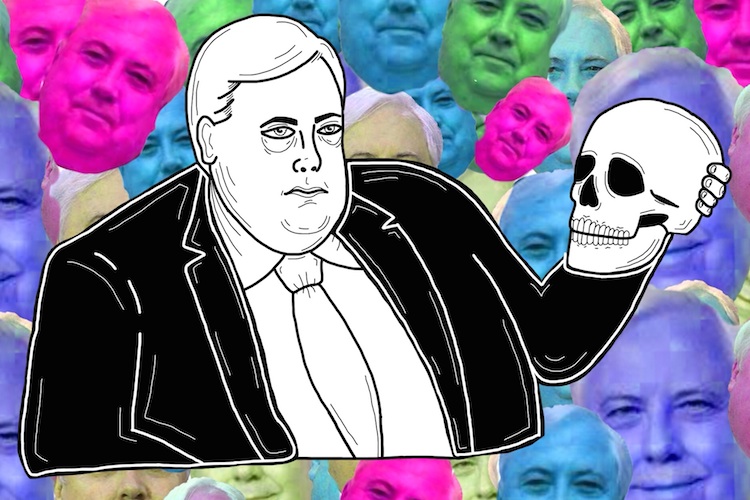If you haven’t heard of Clive Palmer’s social media extravaganza by now, you are (perhaps mercifully) out of the loop. In mid-February this year, the billionaire mining magnate-turned-politician began to post surreal ‘poems’ to his Facebook and Twitter profiles. All who saw this expected his Verification Ticks to blip out of existence, assuming he’d been hacked, but they stubbornly remained, confirming Palmer himself was behind the posts. This was further proven by Palmer posting videos of himself talking in the same, stilted syntax as his posts were written in. Over the course of the next two or three weeks, Palmer was an Australian internet sensation. At the time of writing, he sits at 107,221 likes on Facebook and 71,252 followers on Twitter. Palmer’s posts quickly lost their allure for many, especially when they began to include ham-fisted political commentary and plain-flour meme templates from mainstream pages. But the fever had already taken; Palmer’s image was dramatically altered in the media and in the minds of young people. He went from yesterday’s Trump-ish political failure to today’s meme legend, and in 2017, this has been the most interesting thing about him.
Those who follow boring news may have noticed that Palmer’s social media escapades coincided with the Federal court case on the liquidation of his company Queensland Nickel, which left around 800 refinery workers jobless. The liquidators, FTI Consulting, claim that Palmer shadow-directed the company with his nephew Clive Mensink and that Palmer used it to bankroll his other businesses and the Palmer United Party. Mensink is now an international fugitive, refusing to comply with orders to give evidence on the collapse of Queensland Nickel.
Most news outlets did not connect these two happenings, even if they reported on both. While people are consuming Palmer’s social media content, they are either not seeing the news about Queensland Nickel at all, or are viewing it through the filter of their new perception of Palmer as a decent jokester who couldn’t be doing anything too shady. In this way, the public image of Palmer departs more and more from ‘billionaire mining magnate encased in scandal,’ a generally unfavourable position, and moves toward ‘meme poet’.
I argue that the Palmer case is an example that demonstrates a more general argument about social media and public consciousness: that social media is not the great equaliser of free expression which is it so often touted to be. True, Facebook and Twitter provide a platform for anyone who signs up, but these platforms were not created equal. Individuals and groups in positions of power automatically generate followers without doing anything; they exist in public consciousness irrespective of social media. Social media then becomes a mechanism for speaking to the public without a journalistic or critical filter, allowing for the active shaping of public image in ways which suit the poster’s agenda. Trump’s election victory is an example of this. Using Twitter, where he enjoyed an enormous following prior even to nomination for the Republican candidacy, Trump could speak directly to the public without ‘fake news’ fact-checking, disputing the validity of mainstream media and positioning himself as the only unbiased truth-teller. In this way, social media acts as a rhetorical tool of those in power, and the idea of it as a horizontal playing field on which ordinary people have lively debate must be reassessed.
Despite what I humbly expect would be surging support from young people, Palmer has opted to disband his political party, stating that politics in 2017 is different to 2013, when he ran for parliament. His direction from here is unclear, but what I think is clear is that this is a man who wants to stay relevant, and who will employ media tactics, however wacky, to do so. The lesson for us social media consumerists is this: be critical and sceptical of powerful people on your newsfeed.
Words by Jacob Broom, art by Eloise Brenda
This article first appeared in print volume 88 edition 4 GIRL

